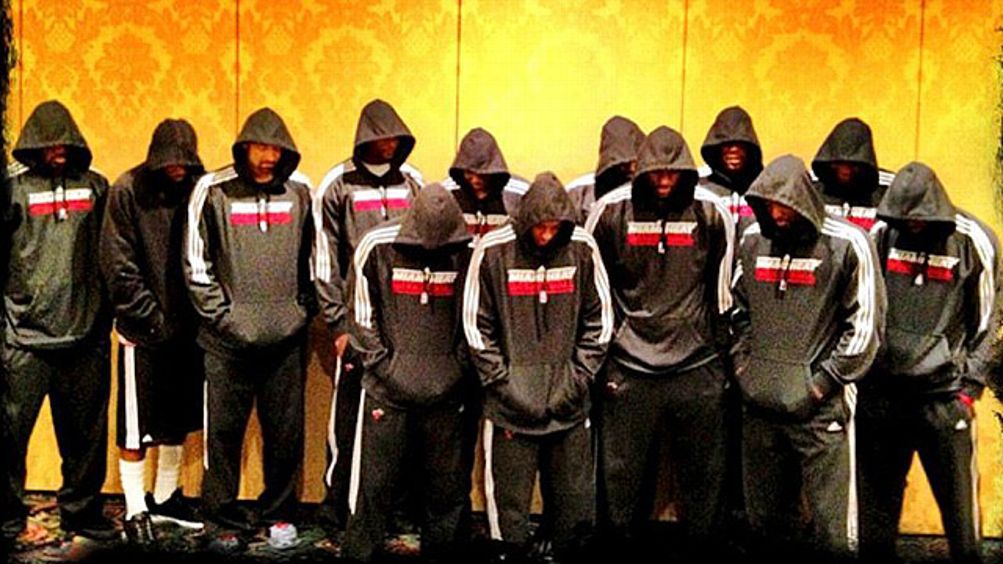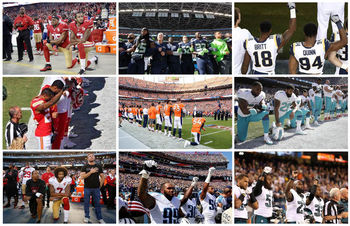“The Human Rights Salute” - October 16, 1968
The protest occurred in the middle of the Cold War, when President Lyndon B. Johnson was in power, the year when North Korea captured American surveillance ship USS Pueblo, and Dr. Martin Luther King Jr. and Robert F. Kennedy were assassinated. The Human Rights Salute today is regarded as one of the key moments of 1968.

The Miami Heat Hoodies
On February 26, 2012, Trayvon Martin, a 17-year-old from Miami was on his way to his father’s girlfriend’s home in the suburbs of Orlando. That night, George Zimmerman, 28, reported the teenager to the police, describing him as “suspicious”. While Zimmerman was told by the police not to follow the teenager wearing a hoodie, Trayvon Martin was found dead several minutes later killed by a gunshot to the chest which had been fired by Zimmerman who claimed to have “acted in self-defense” though Trayvon Martin was unarmed. The protest took place during Barack Obama’s presidency, who defended equal treatment for African Americans, attaching a personal importance to the case declaring “Trayvon Martin could have been me 35 years ago”. The protest took place during Barack Obama’s presidency, who defended equal treatment for African Americans, attaching a personal importance to the case declaring “Trayvon Martin could have been me 35 years ago”.
“I Can’t Breathe” - December 8, 2014
This protest also occurred under President Barack Obama and was one of many protests related to the slogan “I can’t breathe”. A march in Washington D.C. and in New York City also arose to fight against prejudices of White police men against African-Americans in the United States.
- “The Human Rights Salute” on October 16, 1968
- The Miami Heat Hoodies on March 23, 2012
- “I Can’t Breathe” on December 8, 2014
- Colin Kaepernick, November 2016
Sports protests have not been organized by one particular group of people, organization or team and have had non-traditional ways of organization. Protests in the world of sports mostly occur at games or world sporting events. Athletes are able to use their followers as a platform to spread a message.
Most sports protests were organized by male players in response to current societal problems, deaths, or movements that arose beforehand. They occur during professional athletes’ careers at games broadcasted on the national television.

